Senior adults are rediscovering the joys of bicycling, which can enhance both physical and mental health as we age. As a result, Baby Boomers are riding bikes in record numbers.
The COVID-19 pandemic of 2020-2021 served to accelerate trends already in place and encourage even more people of all ages to get outdoors for fresh air and exercise, including cycling.
In this article, we’re going to help you select the best, senior-friendly bike style for you, and the bike accessories you need to get started and ride safely.
There’s never been a better time to get out and start riding, regardless of your age. Here are some reasons:
- Biking is healthy: Bicycling is a low-impact aerobic activity that is easy on aging joints. Various studies confirm that regular bike riding improves heart health, helps with weight loss, fights depression, tones muscles, and strengthens the brain. For a detailed explanation of how cycling helps brain health, see this article from Bikemunk.
- Biking is safer: Communities in all 50 states are building paved paths exclusively for bicyclists and pedestrians, as well as thousands of miles of well-marked bike lanes. This improved bike transporation infrastructure makes bike riding far safer. The nation’s bike trails include nearly 25,000 miles of trails built from former railway beds, according to Rails-To-Trails Conservancy, and this is only a fraction of the total number of bike paths available. This trend is not limited to the United States. Most of Europe, Canada, Australia, parts of Asia, and elsewhere are busy building better bike infrastructure to encourage bike riding and make it safer.
- Bikes are better: You can now find a variety of both two and three-wheel bicycles designed with seniors in mind. These bikes are more advanced and better built than the ones we rode as kids. Plus, thanks to technology advancements over the past couple of decades, consumers can now choose electric-powered bicycles. “E-bikes” add to the fun and excitement of cycling, especially for senior adults and others with health issues that may keep them from enjoying traditional bikes. We will show you the best types of bikes to ride later in this article.
- Biking is popular: Seniors represent one of the fastest-growing population segments who are becoming regular cyclists, according to a study by Portland State University. Many 55+ communities have bicycling clubs and organized group rides. The Villages, the nation’s largest 55+ community, earned the coveted Gold status as a Bicycle Friendly Community from the League of American Bicyclists. The Central Florida mega-retirement community was also the first 55+ community in the nation to earn the Bicycle Friendly designation.
- Biking is good for the environment: The bicycle has gained new respect in North America, Europe and Asia as a serious alternative mode of transportation that is more environmentally friendly than gas-guzzling cars, SUVs and trucks. Depending on where you live, you may be able to use your bike to run errands or commute to work, leaving your car at home. Some nations are offering financial incentives to new buyers of electric-powered bicycles (e-bikes) to encourage their citizens to use them more for short errands instead of cars.
Cycling in America’s largest retirement community

Mark Hall, left, owner of Village Cycles.
Mark Hall, who along with his wife Windy own Village Cycles in The Villages, said 80 percent of his sales are to seniors, so he is knowledgable as to why seniors ride and what they look for in bikes.
“Cycling is a really interesting thing,” Hall said during a recent visit to one of his two stores in The Villages. “Once you tap into it and start riding and you begin to measure everything the bike experience can do for you — physically, mentally, emotionally — it’s priceless. It betters our lifestyle, we feel better and have more energy, our outlook is better, it’s a stress reliever, and of course, we’re taking care of our body through riding the bike.”
Hall said bicycling is an ideal activity for most senior adults, especially those suffering from joint pain that may prevent them from doing other forms of exercise.
“Many of our customers have knee trouble and need low-impact exercise. Cycling is one of the best things, along with swimming, that they can do.”
How to Select a Senior-Friendly Bike
The joy of bike riding we Baby Boomers experience today may be similar to what we felt as children or young adults, but as we are all well aware, our bodies have changed. The bike you rode back then is probably not the same type of bicycle you need today. Fortunately, bike manufacturers have responded with new bikes that have features better suited to more mature adults. Even if you have balance issues, there are bikes you can ride.
Here are tips on selecting the right bike for you:
- Traditional vs. electric bikes: Electric-assist bicycles, more commonly known as e-bikes, can be a real game-changer for senior adults. With an electric bike, it is possible to ride further per ride without tiring out, making cycling fun again. E-bikes are one of the fastest-growing segments of the worldwide bicycle market, and us Baby Boomers are buying them in droves. An e-bike includes an electric motor and battery that provides a much-needed additional boost, especially helpful when going up hills. This is called “pedal assist.” As the term implies, an e-bike is still a bicycle and with pedal assist the rider must still pedal. Some e-bikes also include a throttle, which makes it possible to ride, at least for short distances, without pedaling. Whether to purchase a traditional bike or an e-bike is a personal choice. E-bikes cost considerably more and are heavier. Unless you are a true athlete, however, as a senior adult you will probably be happier cycling on an e-bike. You should at least try riding one before making your decision on which bike to purchase. A good place to test-ride an electric bike is at a Pedego Electric Bikes local bike shop. Senior adults are Pedego’s largest target market and many of its 140-plus franchised stores are owned and operated by people age 50-plus. Most Pedego stores will rent you an e-bike, giving you a chance to see if you like e-bikes before buying one.
Read our related story about how e-bikes are helping seniors stay fit and enjoy cycling again. - Buy from a bike shop: Especially if you are new to bicycling or haven’t ridden regularly for many years, it is best to shop at a local bike shop rather than buying online. Visit one or more bike shops, preferably ones that are accustomed to selling to seniors. There are plenty of good-quality bikes available to purchase online, but bike shops have clear advantages for the average senior cyclist. First, a bike shop can advise you on the right type of bicycle based on your needs, experience, size, and health. Bike shops will let you test ride various bikes to see what you most like. A bike shop will make sure the bike is assembled correctly and properly fitted to you. Proper fit is extremely important. Finally, bike shops offer after-the-sale service and warranty work. This factor alone makes buying locally better for most senior-adult consumers.
- Think about how you plan to use the bike: Manufacturers make different types of bikes for a reason. Some bikes are designed for serious athletes who want a performance-oriented ride. Other bikes are made tough for enthusiasts who enjoy the adrenalin rush of riding mountain trails. Still others are designed more for comfort and ease-of-use, with recreational (and older) users in mind. Bikes can also be selected based on whether they are designed mostly for use on paved roads and trails, or for riding in sand, dirt, and other rough terrain.
- Know your budget: One of the worse mistakes a new bike buyer can make is to shop primarily by price, looking for the cheapest bicycle. That’s asking for trouble. This is not a product you want to buy from Amazon or Walmart. Seniors need better-quality bikes. So how much should you expect to pay for a bicycle? You won’t find a decent traditional (non-electric) adult bike for under $500, or a quality e-bike for under $1,000. That doesn’t mean you have to pay $5,000 or more for a premium bike, although you easily can. You can find a good selection of traditional bikes in the $500 to $2,000 range, with electric assist (e-bike) models costing between $1,500 and $4,000.
See related story on the best bike trails in Florida, a great state for riding.
Best Bikes for Seniors
While some of the more athletically inclinded or thrill-seeking senior adults will favor performance-oriented road bikes or mountain bikes, most of us at this age want a bicycle that is comfortable and easy to use. Here are some popular types of bikes to consider.
Cruiser bikes: Also known as “comfort bikes,” cruisers put riders in a more upright position, not bent over the handlebars. They feature wider, cushioned seats that are easier on aging bodies. Cruiser bikes also have wider tires that improve control, balance and ride. This is the most popular style bike for Baby Boomers. Cruiser bikes will typically include hand brakes and a selection of three or more gears, which makes riding up hills easier. While the standard, full-size 26-inch bike size is suitable for most adults, those of shorter stature may want to ask about 24-inch or even 20-inch bikes. Test ride various sizes and models before choosing the one that’s best for you.
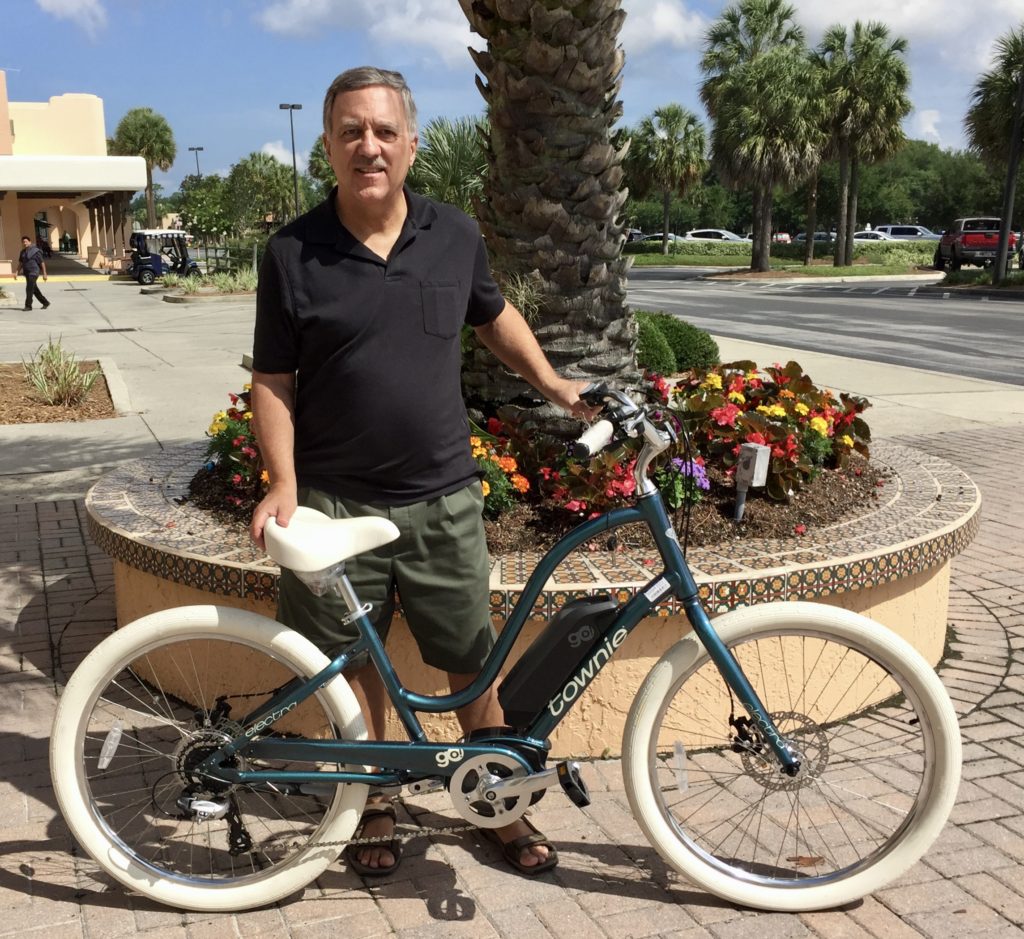
A cruiser bike is the most comfortable style for many senior riders. Photo thanks to Village Cycles, Florida.
Step-through bikes: This isn’t so much a type of bike as it is a design feature. Most step-through bikes are also cruiser bikes. While traditional bikes feature a high frame bar that the rider must swing his or her leg over to mount, step-through bikes make it easy to get on or off the bike. Due to hip or lower-back issues, step-through bikes are favored by many seniors, both men and women. In the old days, you might have thought of these frame styles as “boys” and “girls” bikes, but step-through bikes are gender neutral and popular with both men and women. Step-through bikes are considered safer for senior riders. Many accidents happen while riders are trying to mount or dismount from their bikes; step-through bikes eliminate this problem.
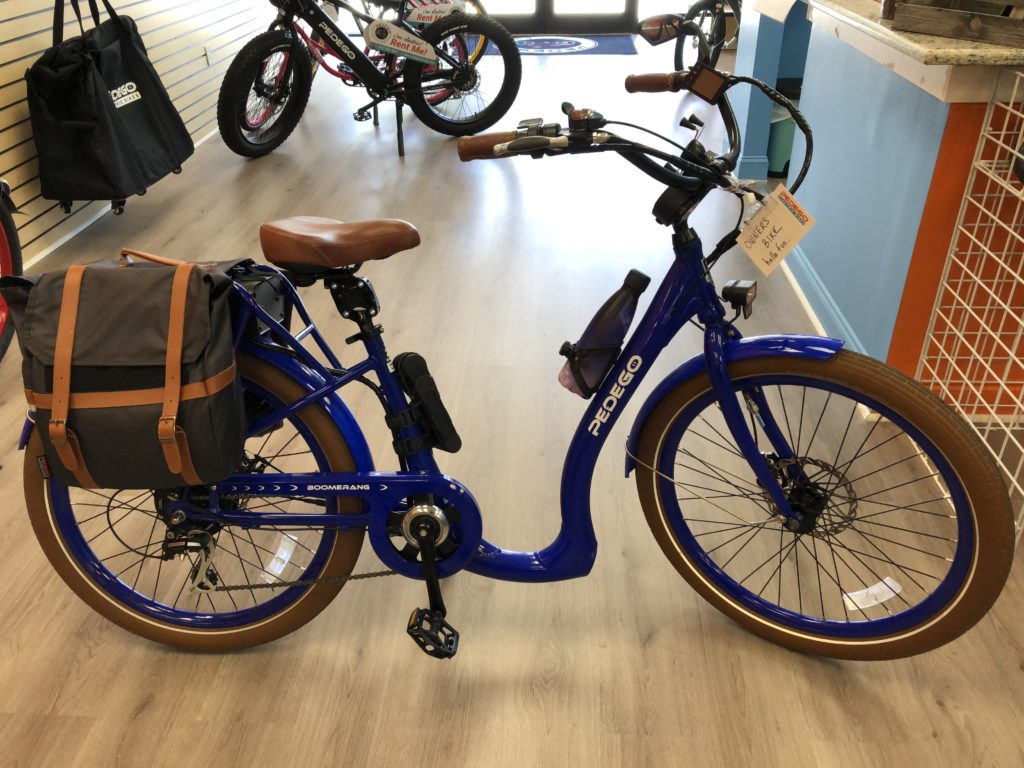
An e-bike with step-through design and cruiser styling. Photo thanks to Pedego Electric Bikes, Oviedo, Florida.
Foldable e-bikes: An increasingly popular bike style for senior adults is the 20-inch foldable electric bike. These smaller bikes are especially popular with RV owners because of how portable they are. They fit easily in the back of an SUV or minivan; no bike rack is required. While the smaller tires might make pedaling harder on a traditional bike, on an e-bike you won’t notice any difference. Plus, smaller bikes can be safer, especially for shorter riders, and easier to maneuver. Some of these bikes feature wider (three to four inch) tires that provide a smoother ride and allow you to pedal through sand and dirt. These are called “fat tire” bikes.
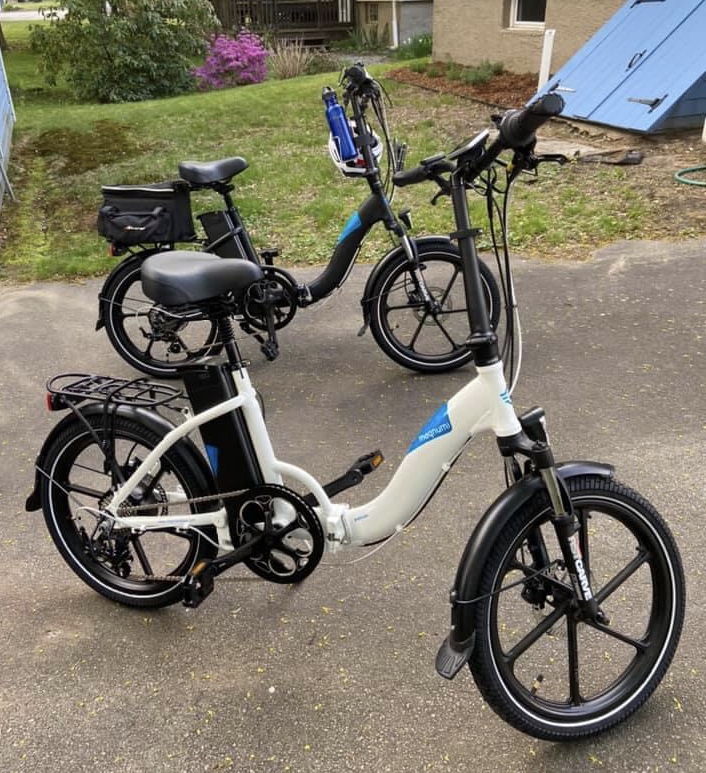
Smaller 20-inch foldable e-bikes are easy for seniors to ride and transport.
Adult trikes: Adding a third wheel to a bicycle makes it possible for almost anyone to ride it, even those who never learned how to ride a standard bike or who have since developed balance issues. This style of bike has been around for more than a century. They are popular within 55+ communities, on bike trails, and for running errands. Since these trikes are heavy and have a third wheel, most models are slower than regular bikes and not well suited for riding up hills. While that’s true with traditional trikes, a newer version called the e-trike gives extra power to adult trikes, allowing you to ride further and ascend hills with ease.
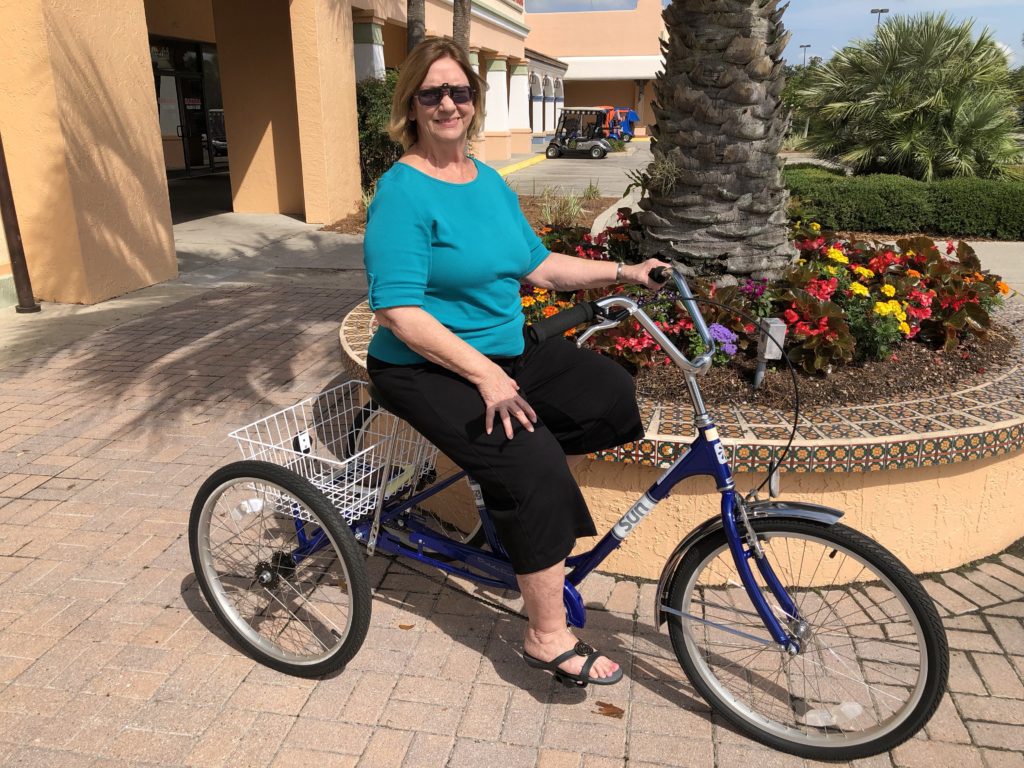
This is a traditional style adult trike. Photo thanks to Village Cycles, Florida.
In recent years, manufacturers have introduced innovative trike designs, some of which are sleeker, more lightweight, and faster, while retaining the ease of use of traditional adult trikes. If you are interested in a trike, try several models to find the one that best suits your needs.
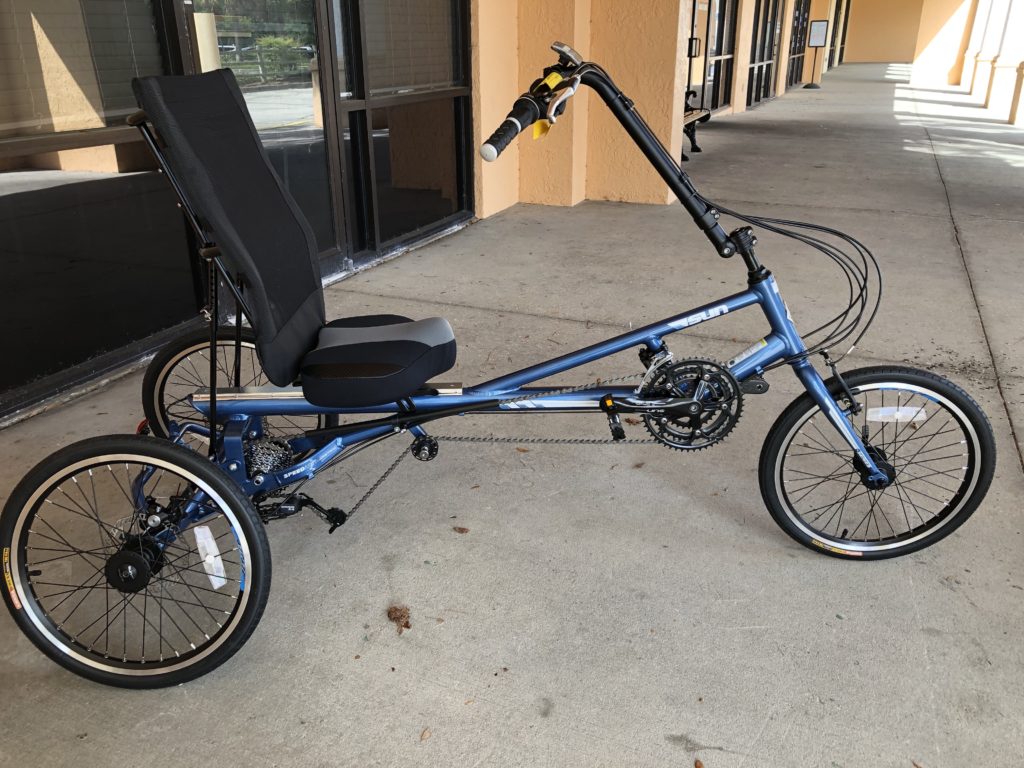
Some trikes feature a sleeker design and comfortable back support. Photo thanks to Village Cycles, Florida.
Recumbents: Like adult trikes, recumbents have three wheels, but that is where the similarity ends. Recumbents sport a sleek design, with a riding position that is lower to the ground, and can cruise at speeds similar to regular bikes. Both adult trikes and recumbents have comfortable seats with good back and hip support. Some recumbents fold, making them easier to transport to trails.
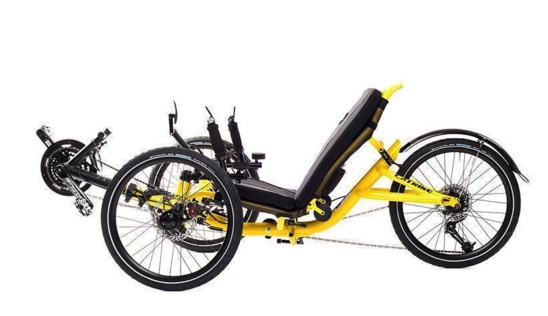
Recumbent trikes such as this one from Catrike provide good back and hip support. Some models are foldable.
Don’t Forget Safety Accessories
Before riding your bike, be sure you have the safety accessories you need. The most important of these is a bike helmet. Don’t let the relatively low speed of a bicycle fool you. Serious head injuries can occur in cycling accidents. Always, always wear a helmet when riding a bike. It is your head and brain’s best protection. If you need more convincing, read this article for some sobering facts about bike accidents.
A left-side mirror is another helpful safety accessory. Frankly, they should be standard issue on all new bikes. A mirror will allow you to see who is behind you and who is passing you. Mirrors may be mounted on the bike handlebars (most common) or included with helmets. If you plan to ride on trails or city streets, you definitely need a mirror.
If you are going to ride for longer distances, you may want brackets on your bike for carrying a water bottle and your cellphone. Do not hold drinks, phones, packages or anything else in your hands while riding. You’re not 14 anymore; you need both hands on the handlebars.
Likewise, if you plan to run errands or shop with your bike, make sure you have baskets or bags large enough to hold these items. Do not carry them in your hands.
Bikes are unfortunately easy targets for thieves. Always lock your bike, even if just stepping into a gas station or restaurant. Invest in one or two good-quality locks. Ask your local bike shop for recommendations. At home, don’t leave your bike parked on a carport or driveway unless it is locked. If possible, store it away where it is out of sight, especially at night and when you are not at home.
Footwear is also important for safe cycling, but you don’t need special cycling shoes. Wear sneakers or other closed-toe shoes when bicycling, never flip flops or barefoot. Make sure shoelaces are out of the way of the chain.
If you plan to ride after dark (it’s better not to do so), you will want to wear reflectors on your clothing and be sure the bike’s lights (front and rear) are in good working order.
Read our related article: Bike Safety Tips for Seniors
Rediscover the Joy of Cycling
Bicycling is something I’ve enjoyed most of my life. As a child blessed to grow up in a simpler, less crime-ridden era, I explored city streets and parks on my bike with abandon, riding many miles from home for hours at a time. Later, when Kathy and I got married, we bought each other matching Raleigh touring bikes for wedding presents. Today, as a senior citizen, I am riding more than at any time since childhood and loving it. It’s a great activity that keeps you outdoors, exercising, and exploring new adventures.
If you haven’t ridden a bike in many years, let me encourage you to give it a try. Check with your doctor if you’re not sure you are healthy enough for cycling. Even if you never learned how to ride a bike in your youth, many bike shops, senior centers, or bike organizations offer coaching or classes that can help you learn to ride.
There’s a lot of truth to the old saying that once you learn to ride a bike, you never forget. When you get back on a bike again and start pedaling, you will rediscover the thrill and exhilaration of riding you once enjoyed as a child or young adul
See related story about the joys and benefits of walking
Want to Learn More?
Try these resources for more great information about bicycling:
The League of American Bicyclists
AARP: Bicycles Aren’t Just for Kids
LovingtheBike.com (blog)
(Note: This story originally appeared on May 15, 2019, and has been updated to reflect the latest information.)
Are you a senior adult who rides a bike? Tell us about your experience and what you enjoy most about cycling. Add your comment below. Thank you for sharing!
Note to readers: Some of the links on thisretirementlife.com are affiliate links from which we receive a small commission from sales of certain items, at no extra cost to you. As an Amazon Associate and a participant in other affiliate marketing programs, we earn from qualifying purchases. These commissions help support this blog so we can continue providing timely and useful information about living life to the fullest during the retirement years. See the full disclosure statement here.
Love this story? Sign up below to receive future blog post from This Retirement Life, sent to your email box, free of charge.
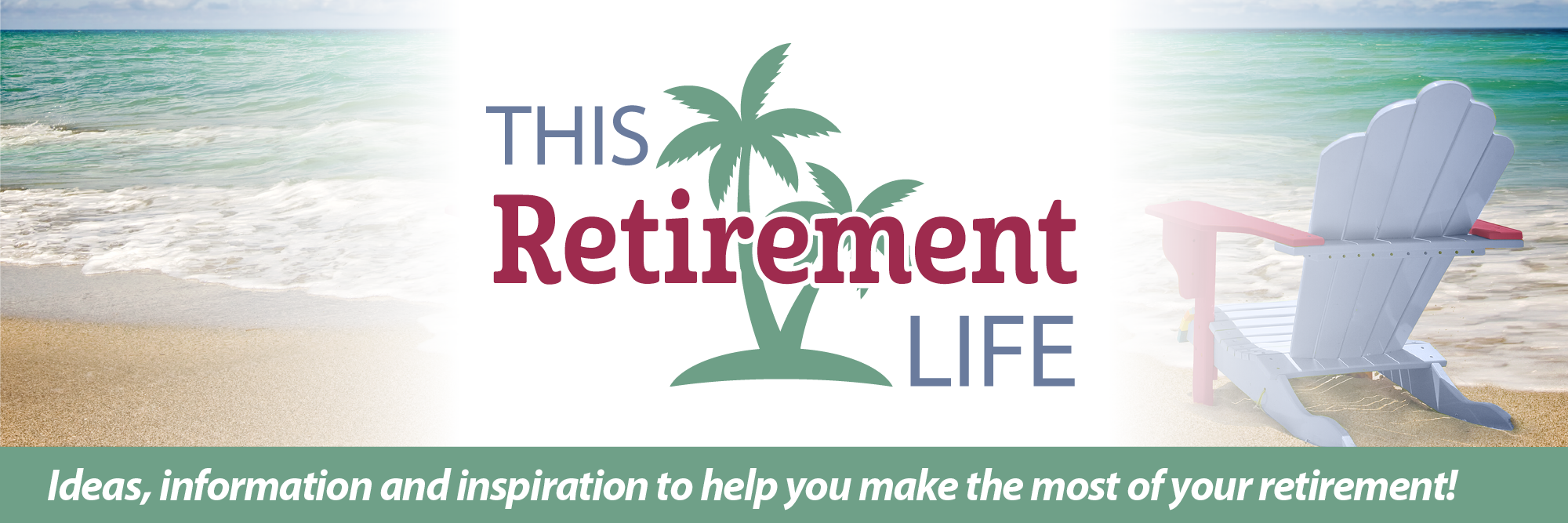
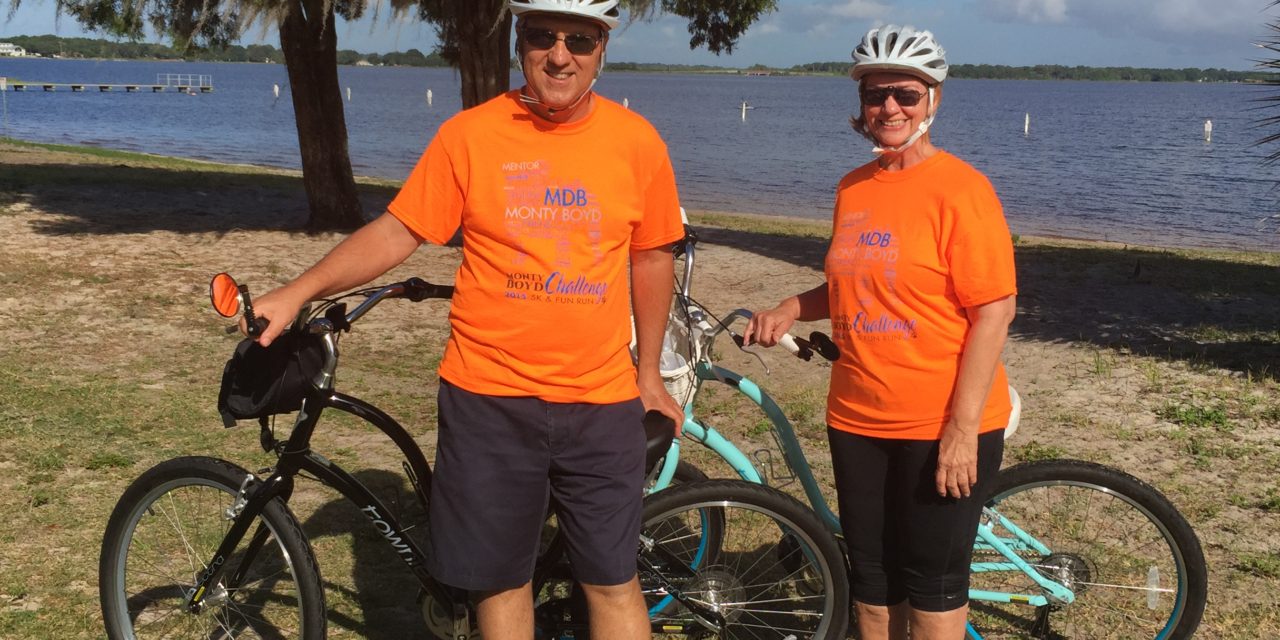








Very Useful information. Thanks for sharing. 🙂
It’s very helpful for guys who have been away from bicycle for many years. but just that it’s hard to find inventory now
This is so true. Bikes are selling very fast, and the supply chain still seems messed up for nearly all products. Hopefully you can buy the bike of your dreams soon. I have one on order now myself from a local bike shop and am expecting a wait of about six weeks.
I need prices please.
There are some price ranges included in the story, but your best bet may be to visit a couple of bike shops and see what appeals to you and look at their pricing. As a general rule, you can get a decent (basic) conventional bike for under $1,000 and a good-quality e-bike (electric assist) in the $2,000 to $3,500 range. In both categories, more premium brands can cost much more. You can find bikes online or at big-box stores for much less, but as usual, you get what you pay for. I recommend buying through a local bike shop, especially if it’s your first bike purchase in recent years.
Great article, Dave! Ms. Miller would be proud!
Do you or anyone you know have any experience with bikesdirect.com?
When the bottlenecked supply chain becomes less choked, I plan on replacing my old 1996 Marin Nail FRS with another full suspension Mt. Bike frame.
Since I rebuilt it a few times, it’s ready for retirement also. I plan to rebuild it one last time with my grand sons, when they are old enough. It has proven excellent for urban treking and curb hopping.
I have always found recumbants facinating. Given that bicycles are arguably the most efficient mechanical device developed by man, the recumbant improves by making the bicycle even more mechanically efficient, by lowering the center of gravity and placing a clear acrylic fairing in the front to to further decrease drag and wind resistance. In the late 80’s and early ’90’s, I commuted 13.5 miles to the Medical Center in Memphis frequently on an ’89 Schwinn Sierra mountain bike frame with street gearing and 1.5″ street slicks. I was able to cruise comfortably at 17-18 mph, arriving at work in ~38-45 minutes depending on stop light timing, traffic and the Southern Rail Road schedule. One morning at Poplar and East Parkway, the stop light caught me at 1st Baptist Church. A fellow commuter on a two wheeled recumbant came to rest beside me. We chatted a while waiting for the light to change and he shared he consistly cruised at ~30-35 mph!!! I was humbled! At the change of the light he effortlessly left me behind within a few hundred metres. Aerodynamics rule!
Keep up the good work!
I have had a few electric bikes, but now at age 70 and 5’2″, bikes aren’t so comfortable for me any longer. I want to be closer to the ground, a comfy seat (which I can’t seem to find) and a throttle and hand brakes that don’t cause pain in my thumb joint and stiff fingers. The pedal assist got disconnected because all I had to do was touch the pedal and it seemed to want to take off! So I now use a thumb throttle. I live in a hilly town so its necessary to have electric. The bike I use is a foldable and brings me closer to the ground so I am able to get my feet planted quickly when stopping, so thats good. The pain in my right hand and discomfort from seat keep my rides pretty short. I feel so discouraged but maybe I need to accept I am aging.
A 20-inch foldable bike sounds like a good solution, so I am glad to hear that’s what you have now. Have you considered an electric trike? They come in a variety of configurations, and some of them do indeed have very comfy seats. E-trikes are popular with us aging Baby Boomers. My wife switched to one earlier this year and is very happy with it. Hope this helps.
Great Article About the cycling for both Women and Men Cycling cloth
Thank you. I hope the article is helpful to readers.
Very helpful and informative article. Thanks for sharing!
corporate garbage. Real statistic prove you are lying to push a product. No real interest in safety or well being of the readership. One more reason to avoid the internet as a source of legitimate honest help.
You’re entitled to your opinion, but for the record I do not sell e-bikes or have an employment relationship with any cycling companies. This blog is not owned by or affiliated with any bicycle manufacturer or retailer (or any other corporate entity). My desire for the blog is to provide helpful information for my senior-adult readers that will make their lives better. It’s a labor of love on my part. I’m sorry if in your opinion I missed the mark with this story, but thanks for taking time to share your thoughts.